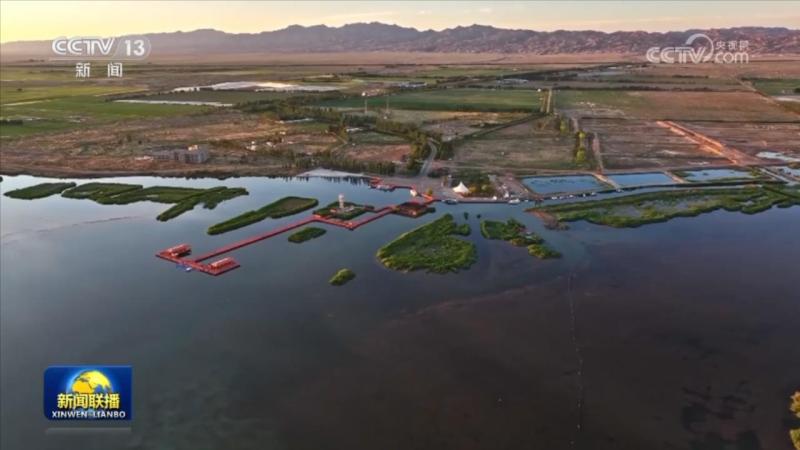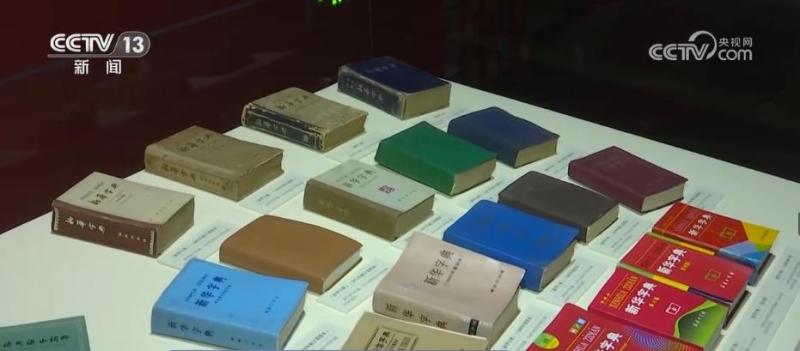Focus Interview: Keep in mind the General Secretary’s instructions that ancient streets and ancient porcelain be updated day by day
News: Culture is related to the foundation and destiny of the country. Culture is in our daily lives, as well as in the cities and villages where we live. It’s Chinese New Year, so take a walk around the old streets and feel the history and heritage, which also has a unique charm. Suzhou Pingjiang Historical and Cultural District has a history of more than 2,500 years. Small bridges and flowing water, white walls and black tiles, Wu Nong's soft words, and Pingtan music are a picture of a water town in the south of the Yangtze River. What kind of past and present life does it have? In Jingdezhen, thousands of years of kiln fires are kept alive, and the beauty of ceramics amazes the world. What kind of ingenious inheritance does it have?
As the Spring Festival approaches, the Pingjiang Historical and Cultural District in the ancient city of Suzhou is very lively.
Aunt Yao is an old resident here. She was very happy to see the festive decorations and the huge flow of people on the streets.
Yao Zhijian, a resident of Niujia Lane Community, Pingjiang Street, Gusu District, Suzhou City, Jiangsu Province: "It used to be very shabby and there were few tourists, but now there are so many tourists. Here, I met our general secretary. We were drinking tea here and listening to Pingtan , the General Secretary came from the south, we saw the General Secretary coming, and everyone greeted the General Secretary one after another. The General Secretary said that we are very lucky to live here, and we have indeed felt the changes in the past ten years, so we thought. Say thank you to the General Secretary.”
The reason why Yao Zhijian felt deeply about this time was due to her decades of experience living on Pingjiang Road.
Pingjiang Historical and Cultural District is located in the ancient city of Suzhou and has a history of more than 2,500 years. The Grand Canal passing through the city has given birth to the unique style and lifestyle of Susu people, and has also left a rich cultural heritage for the local area. Among the canal heritage of the Suzhou section, the Pingjiang Historical and Cultural District enjoys a unique status, and there is a saying that "a Pingjiang Road is half of the city of Suzhou".
However, due to lack of protection, some of the old buildings here suffered varying degrees of damage, and this street, which carries Suzhou's long culture, has gradually become dilapidated.
Yao Zhijian said that at that time, many old buildings had been turned into courtyards, and it was difficult to preserve the historical and cultural atmosphere of the building itself. For many young people who grew up here, moving away was their biggest wish when they were children.
In 2002, Suzhou City launched the Pingjiang Road style protection and environmental improvement project. However, due to various reasons, the protection at that time also had great limitations.
Since the 18th National Congress of the Communist Party of China, from the inheritance of cultural heritage to the protection of natural heritage, from strengthening the protection and utilization of material cultural heritage to stimulating the innovative vitality of intangible cultural heritage... the General Secretary has focused on retaining cultural roots and guarding the soul of the nation. At a strategic level, we care about and promote the protection of cultural and natural heritage. Like many historical and cultural blocks, the overall "skeleton" of Pingjiang Road has not changed, and the texture is getting healthier.
Wang Yongfa, Director of the Planning and Protection Department of the Ancient City Protection Committee of Gusu District, Suzhou City, Jiangsu Province: "Since the 18th National Congress, the country has raised the protection of cultural heritage to a new historical height. In this context, Suzhou has strengthened the overall protection and overall protection of the ancient city. and systematic protection, based on the protection and restoration of cultural relics buildings, to excavate, clarify and make good use of core culture.”
In fact, it is not easy to achieve the integration of ancient and modern times, retain the cultural context, and maintain the style. For Gusu District in Suzhou, the first step is to find out the status of the buildings and cultural relics that need to be protected. To this end, the local government implemented the "Ancient City Cell Anatomy Project". In the past three years, a total of 27 neighborhood information in Suzhou's historic city has been collected, leaving a scientific basis for the restoration work.
A complete historical and cultural district must have both original charm and a long history. How can a large number of old houses that have been vacated and restored be restored to life?
No. 38 Daru Lane is a place where Yao Zhijian often takes his granddaughter to visit. Before the Spring Festival, lanterns were hung here, filled with a strong festive atmosphere.
In fact, this place was originally a temple ruins from the Yuan Dynasty. In the first half of 2023, the Gusu District Government, taking into account the needs of surrounding residents and without damaging the original structure of the courtyard, decided to open it to the public as a characteristic cultural space of Suzhou City.
Shi Zheng, Director of the Public Cultural Center of Gusu District, Suzhou City, Jiangsu Province: "For example, in the first entrance, the brand we are currently building is called Meet the Masters. Here you can see the masters of intangible cultural heritage anytime and anywhere. The current exhibition is the Taohuawu woodblock New Year painting display. ; The second step is to create a reading space, where there are not only books, but also many intangible cultural heritage works; the third step is activation, with Pingtan, Kun Opera, and cross talk, and performances are performed inside from time to time for citizens and tourists. The entire historical context of No. 38 Daru Lane is presented through a combination of movement and static.”
Under strict supervision, many old houses here have been revitalized and utilized, which not only maintains the main style, but also absorbs new modern elements, making them ancient and showing vitality.
Chinese culture has a long history and Chinese civilization is extensive and profound. Today, we can still touch the Liangzhu culture of 5,000 years ago, identify oracle bone inscriptions of more than 3,000 years ago, and stroll through the Forbidden City which is more than 600 years old. These precious cultural heritage embody the continuity, innovation, unity, inclusiveness and peace of Chinese civilization. When looking back on the year 2023, General Secretary Xi Jinping conducted many on-the-spot investigations on the protection and inheritance of traditional culture, whether it was at the Central Branch of the National Library of China, the Chinese Academy of History, Cuiyunlang Ancient Shu Road, Sanxingdui Museum, East Zhejiang Canal Cultural Park, etc. General Secretary Xi Jinping’s care and entrustment all demonstrate his love for history and culture and his leadership in cultural inheritance and innovation.
Come from practice, go to practice. In order for Chinese culture to be passed down from generation to generation, not only the material cultural heritage must be protected, but also the intangible cultural heritage must be protected. Not only must the heritage itself be passed on, but also the Chinese wisdom and Chinese spirit contained in it must be passed on.
The Spring Festival is approaching. Sun Lixin, the intangible inheritor of Jingdezhen's blue and white porcelain painting skills, and his apprentices are making a dragon plate to welcome the New Year. They want to use the shape of a dragon to present the word "Fu" on this 1-meter-diameter porcelain plate.
After more than 100 days of hard work, the dragon plate will be completed on this day.
Sun Lixin has many apprentices. Compared with the inheritance of technology, he always feels that the inheritance of culture is more important, but it was an opportunity that made him firm up this idea and put it into practice.
On October 11, 2023, General Secretary Xi Jinping visited Jingdezhen City, Jiangxi Province for inspection and research.
During this investigation, the General Secretary encouraged the inheritors of intangible cultural heritage to put art first and concentrate on inheritance and innovation, which also gave Sun Lixin a deeper understanding of cultural inheritance.
24-year-old Yang Zixuan is one of Sun Lixin's apprentices. In June last year, she began to learn ceramic painting techniques from Sun Lixin.
In order to let his apprentices understand traditional culture and the history carried by Jingdezhen, Sun Lixin began to consciously cultivate their understanding of Chinese history, ceramic history, and traditional Chinese culture.
The key to cultural inheritance lies in people. Today, there are 1,899 intangible inheritors related to ceramic skills in Jingdezhen. Under their leadership, more and more young people have joined in. Countless masters and apprentices like Sun Lixin and his students are dedicated and persevere. With ingenuity.
Inheritance and innovation have injected continuous vitality into Jingdezhen. Jingdezhen’s traditional ceramic skills and culture are reborn through protection and passed down from generation to generation.





